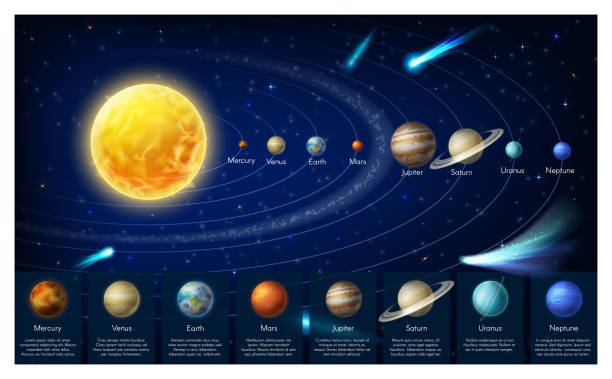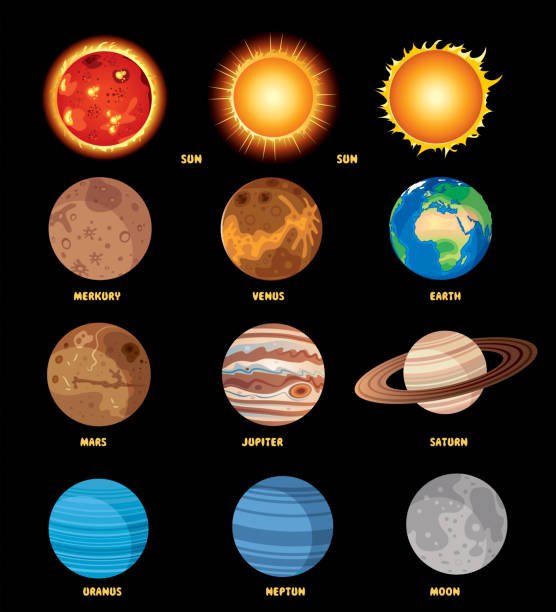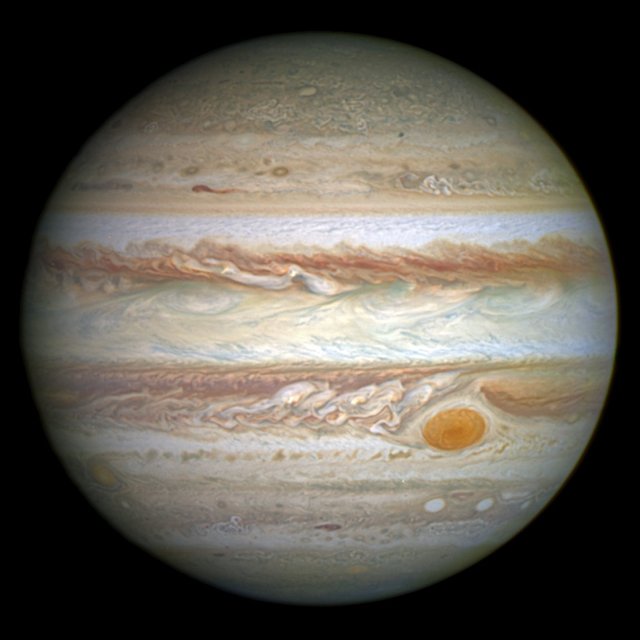A SUCCINCT ANALYSIS OF THE SOLAR SYSTEM

Source:istock
Hello steemians! I am happy to be here again. How are you guys? Hope by what it takes to be healthy you are okay with life? well, I just want to hear from you and know about your health. Good day!
OVERVIEW OF THE SOLAR SYSTEM
Without consuming much of your time,I would be introducing us to the topic of my lesson today. It is quite open or rather obvious that we live in the third planet after the sun, and by this, it only requires series of knowledge, experience and studies for anyone to understand what I mean by the third planet after the sun. Following the aforementioned planet introduces the lesson of today. We are going to learn about the solar system and its major features describing and listing various characteristics of each planet one after the other.
THE SOLAR SYSTEM SUCCINCTLY DEFINED

Source:istock
A definition would simply describe solar system as system comprising of the sun and all other nine planets with their various satellites. Solar system in a nutshell entails and stipulates the systematic arrangement of all the nine planets with their intrinsic satellites which is mostly away from the sun. Some of the nine planets are as follows,we have them as;
-Mercury
-Jupiter
-venus
-Mars
-Earth
-Saturn
-Uranus
-Neptune and
-Pluto.
NOTE: all these nine planets of the solar system revolves around the sun in the order called elliptical orbits. Also note that a satellite means a smaller body that moves around and inside a particular planet for example: we have the moon on planet Earth and that's a natural satellite moving round the earth. Meanwhile a pathway that all planets takes to move round the sun is regarded as ORBIT.
THE PLANETS,MAJOR FEATURES AND VITAL SATELLITES
I remember how I was taught back then in the college. How Mr.Chris would stand in front of the class to give credit to his profession. He would instruct us to go by the sequence of words which says " Mr Victor enjoys morning juice sitting under new planet". Therefore, when trying to write down the planets orderly, we would arrange them in the order of the following sequence. For instance;
-Mr----- Mercury
-Victor------ Venus
-Enjoys------- Earth
-Morning------- Mercury
-Juice----------Jupiter
-Sitting--------- Saturn
-Under------- Uranus
-New------- Neptune
-Planet----------Pluto.
What a wonderful, analogical and logical sequence of words. So I would go by the sequence to describe the planets and its satellites. Note that the planets moves round the sun. So therefore, we start our explanation with the sun.
THE SUN

Source:wikipedia
We say that the other nine planets move around the sun therefore, it would definitely mean that the sun is in the centre of the planets; and to say it does not in itself rotate or move. To an extent and from research, the sun has a surface temperature of 6000 degrees centigrade and is the largest star.
BASIC FEATURES
They includes but not limited to the following,they are;
-It serves as the ultimate source of light energy and stars to other planets.
-It has galaxies and nebulas that exist in clusters although when viewed from the Earth appears singly
The nine planets and their features in the sequence as explained above. They are;
THE PLANET MERCURY
.jpeg)
Source:wikipedia
In a nutshell, Mercury is described as the hottest, smallest and most closest planet to the sun. People,organisms,animals and plants does not live there.
BASIC FEATURES INCLUDES
-Does not support the existence of living things.
-The smallest,hottest and the most closest to the sun.
-Does not have any satellite.
-It takes shortest orbit around the sun.
-The distance of the Mercury from the sun is measured about 57600000km.
-Its diameter measures of about 4800km.
THE PLANET VENUS
.jpeg)
Source:wikipedia
From the order of sequence, venus is the second closest planet to the sun.
BASIC FEATURES INCLUDES
-Does not support life.
-It is called the Earth's twin as it is closer to the Earth and also measures the same proximity in mass,density of size with the Earth.
-Venus completes its revolution in 225 days.
- Distance away from the sun is 107 200 000 km.
-Does not have any satellites.
-Covers a diameter of 12 300 kilometre.
THE PLANET EARTH
.jpeg)
Source:wikipedia
WOW! we are here presently. It is the only lively planet because it supports the living of organisms,animals,man and plants.
BASIC FEATURES INCLUDES
-It supports life because it is the only place that supports the existence of plants and animals.
-It has a natural satellite called moon which gives light in the night and revolves eastward round the earth every 27 days.
-Like we know, it takes the Earth 365 and 1/2 days to complete its moves in its orbit.
-The Earth has a diameter of 12 76 km.
-The distance between the Earth and the sun is 148 800 000 km(approximately 93003 000 miles).
-The distance between the Earth and the moon is 3/8 4629 km.
THE PLANET MARS
.jpeg)
Source:wikipedia
it is believed that Mars has the possibility to support life as it is the next planet after the earth.
BASIC FEATURES INCLUDES
-It has two satellites.
-It's diameter measures across 6790 km.
-The distance from the sun is 227 200 000 kilometre.
-completes its revolving within 687 days.
THE PLANET JUPITER

Source:wikipedia
it is regarded as the largest planet in the solar system.
BASIC FEATURES INCLUDES
-It has a diameter of 142100 km.
-blessed with 12 different satellites.
-contains gases like hydrogen and methane with light and dark bands.
-it takes about 11.9 years to complete its orbit round the sun.
-it is about 772800000 km away from the sun.
THE PLANET SATURN
.jpeg)
Source:wikipedia
we regard this planet as the second largest planet after Jupiter.
BASIC FEATURES INCLUDES
-Its blessed with nine satellites.
-Has a diameter of about 119700 KM.
-Takes 29.5 years to complete its orbit.
-Has three rings round it.
-covers 1417,600,000 kilometres distance away from the sun.
THE PLANET URANUS
.jpeg)
source:wikipedia
Unlike most planets,Uranus moves in a clockwise direction from East to West.
BASIC FEATURES INCLUDES
-it has five satellites which revolves round it.
-It has diameter of 5100 km.
-It takes 84 years to complete its orbit.
-it is 2,854400,000km distance away from the sun.
THE PLANET NEPTUNE
.jpeg)
Source:wikipedia
This is the second most coldest of all the planets.
BASIC FEATURES INCLUDES
-It has two satellites.
-it is a cold planet.
-It takes 164.8 years to complete its cycle in the orbit.
-it has a diameter of about 45000 kilometres.
-Distanced away from the sun by 4 4 6 8 0 0 0 0 0 kilometres.
THE PLANET PLUTO
.jpeg)
Source:wikipedia
This is the last planet in the solar system and it is the most coldest and farthest planet away from the sun.
BASIC FEATURES INCLUDES
-Does not have any satellite.
-Has the longest orbit around the sun.
-It has a diameter of about 5,800kilometres.
-It takes its about 247.7 years to complete its orbit.
-It is the coldest and farthest planet from the sun.
-It's distance away from the sun measures of about 5,850,000,000 kilometres.
CONCLUSION
I'm delighted having logically explained the planets in the solar system. I hope one with the aid of the above statements would comprehend to the various planets in the solar system. To say- enriching and enlightening his or her brain with various features of each planet in the solar system.
..... good day to you all,once again I'm @ezeemmanuel
... remain blessed
REFERENCE
https://googleweblight.com/sp?hl=en-NG&u=http://ssd.jpl.nasa.gov/%3Fbody_count
https://googleweblight.com/sp?hl=en-NG&u=https://doi.org/10.1046%252Fj.1468-4004.2000.00012.x
Nice work bro....It's so interesting, keep the good work
Thank you sir
Write on , please vote for me
Hmm... How do you mean sir
One intriguing conjecture I find when it comes to the sun is that it is called the biggest "star"!
Great piece sir. Thanks for lecture.
You are a guru.....
Thanks for your time
Thanks for the lecture @ezeemmanuel, this is educative
This is so interesting
Alright sir.. thanks for reading
Welcome
Honourable...hmmm
Sir
Howfa
I dey
Thank you sir...
You are welcome
Your work is perfect.
How do you mean ma?
Incredibly detailed, good one
Thanks honourable...
I sight you